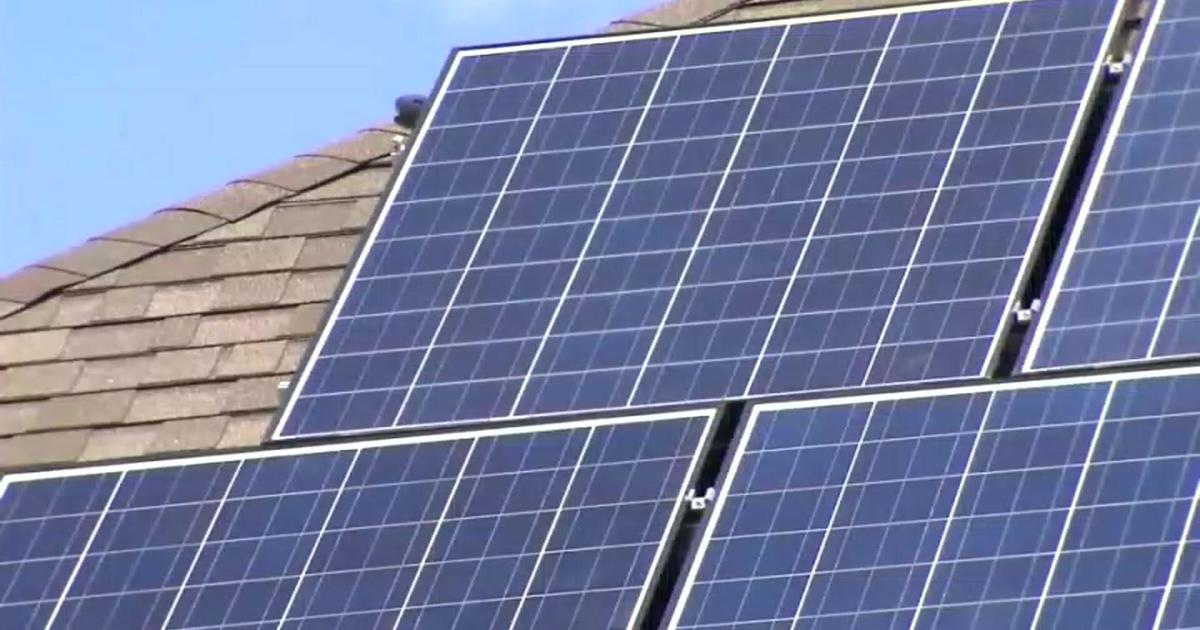One In Three Students At Local California Schools Failed Last Year - But Who's Tracking?
SACRAMENTO (CBS13) — It's no secret that students struggled with distance learning last year, but it's been difficult to quantify the actual impact on California students - until now.
CBS13 submitted public records requests for student failure rates to more than 50 local school districts and found, overall, for every 10 kids with a failing grade during the 2019/2020 school year, at least 18 failed amid the pandemic in 2020/2021.
Other states - and some California school districts - are using pandemic fail rate data to gauge and address learning loss from last year. However, according to the California Department of Education, California is not tracking pandemic fail rates or the impact of a new law that was intended to help struggling students.
Jonathan Zachreson, who has 3 kids in two Roseville, CA schools, says distance learning took a toll on his family.
"It was horrible," Jonathan said.
Especially for his foster daughter, Michelle.
"I definitely struggled a lot more than I probably ever have in the school," Michelle said.
Distance learning was so hard for their family, Jonathan started the Reopen California Schools Facebook group, which lobbied to get schools back open in person and amassed more than 18,000 members.
"I felt like I was so deep down in a hole that there was no way to escape it," Michelle said.
As Michelle approached her senior year this year, she worried she wouldn't be able to graduate due to multiple failed courses last year while struggling with distance learning.
She's not alone.
CBS13 found the number of Fs more than doubled last year at most local districts, and in at least one school district, failure rates tripled.
On average, the enrollment of the school districts that responded to our public records request dropped by 2 percent last year while failures increased in those districts by more than 83 percent.
But maybe more surprising, more than half the districts would not - or could not - provide the requested data related to "Ds" and "Fs" over the past few years. Some acknowledged that they weren't tracking failure rates at all.
In response, the California Department of Education (CDE) said, "Many districts have had their resources stretched to the limit during this trying time. It is not surprising there is incomplete information."
Of the districts that did provide data, most reported that roughly one-third of their students failed at least one class during the 2019/2020 school year, and more than 4 out 10 students had at least one D or F.
National data ranked California 50th out of 50 for in-person learning last year.
Notably, we found little difference in fail rates between distance learning and hybrid semesters. But there was a stark contrast between fall 2019 grades - when students were full-time in-person learning, and fall 2020 when there was a combination of distance learning and hybrid learning.
When CBS13 compared 2019 in-person-semester grades, to last year's distance learning and hybrid terms, the fail rate at most schools more than doubled. In at least one district, the failures tripled.
"I definitely was one of those kids," Michelle said.
Like Michelle, many seniors this year were facing continuation school instead of graduation after failing multiple classes last year.
Then came AB-104.
Among other things, the new law allows students to replace bad letter grades with a pass-no pass. This essentially protects a student's grade-point average by replacing bad grades with a "pass."
It also helps protect their eligibility for college and financial aid, because Cal state schools are required to accept the new transcripts and many other big-name schools have agreed to accept them as well.
The law also allowed high school juniors and seniors with "Fs" to reduce their number of credits needed to graduate on time.
"Honestly, without having that, I definitely would not be able to graduate this year," Michelle said.
But while AB104 gave Michele a fresh start students had to know about it to apply. Michelle's district, in a relatively affluent area of Placer County, reports more than 1500 students took advantage of the law.
However, other districts of similar size, and failure rates, reported few, if any students changed their grades to pass-no pass or took advantage of the graduation credit exemption.
"I can definitely say it saved me," Michelle said.
Currently, it appears no one is tracking how schools are implementing the new law or if they are actively notifying students of their options to graduate on time.
CDE tells CBS13 it is not tracking the number of students who are taking advantage of the new law. "AB 104 authorizes local educational agencies (LEAs) to make the changes referenced above within the provisions outlined in statute; however, AB 104 does not require the CDE to track which students took advantage of these options," CDE said in a statement.
The bill's author, Asm. Lorena Gonzalez (D-San Diego), told CBS13:
"School districts are overwhelmed dealing with multiple, urgent priorities and it became clear that some districts were far more effective than others at communicating to families about options under the new law.
AB 104 is all about making sure students aren't unfairly penalized. As such, we've provided districts the ability to extend their own deadlines to better meet their students' needs and allow them to have a fair shot at updating their transcripts with 'Pass' or 'No Pass' grades.
But looking ahead, we've got a lot more work to do before students get back to where they need to be academically."




